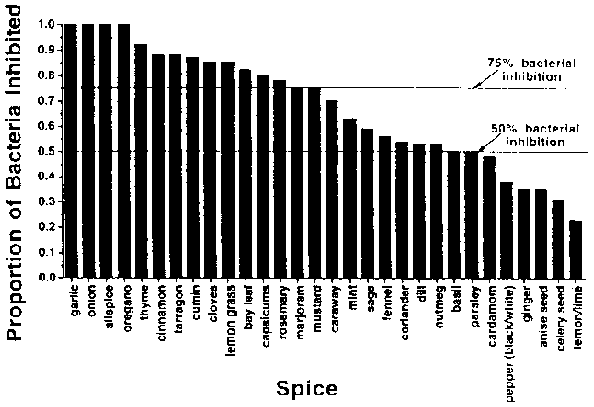 |
Science Frontiers ONLINE No. 120: Nov-Dec 1998 |
|
|
Why Some Like It Hot
That's spicy "hot," not temperature "hot." As travelers can attest, the warmer regions of our planet offer the spicier foods. In a way, this observation is a proof of microevolution. The "fitter" people (that is, "survivors") in hotter climes are those who have inherited a taste for hotter foods.
Spices contain chemical compounds that inhibit or kill the bacteria and fungi that are more likely to poison foods where ambient temperatures are higher. Eaters of spicier foods are more likely to survive in these areas.
This is not just a surmise. A study of 4578 recipes from 93 cookbooks from all over the world have been analyzed for spice content. Sure enough, the hotter the climate, the more recipes using spices and the hotter the spices used. In the language of science:
"The proximate reason spices are used obviously is to enhance food palatability. But the ultimate reason is most likely that spices help cleanse foods of pathogens and thereby contribute to the health, longevity and reproductive success of people who find their flavors enjoyable."
(Billing, Jennifer, and Sherman, Paul W.; "Antimicrobial Functions of Spices: Why Some Like It Hot," Quarterly Review of Biology, 73:3, 1998.)
 |
| Antibacterial properties of 30 spices. |